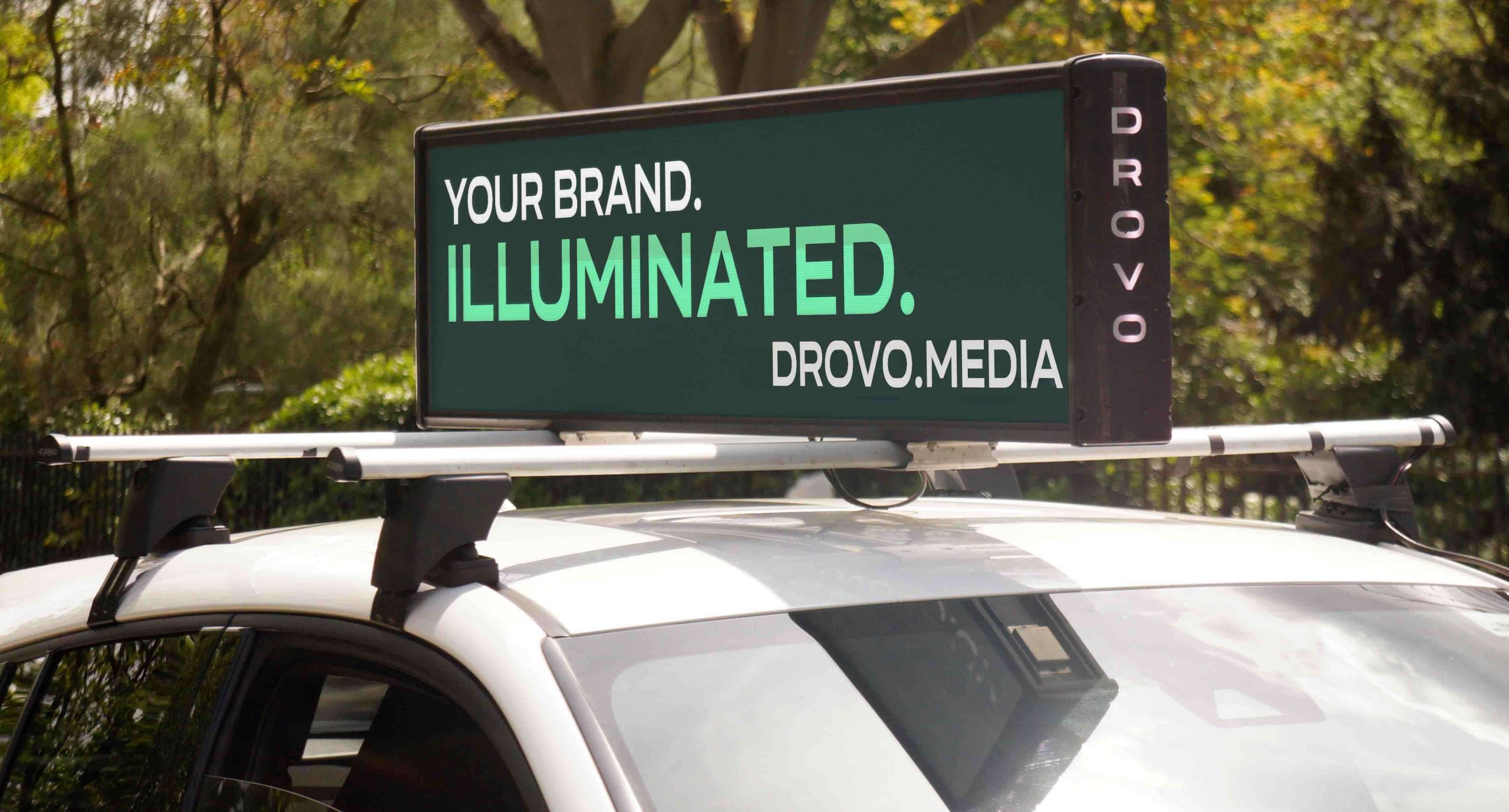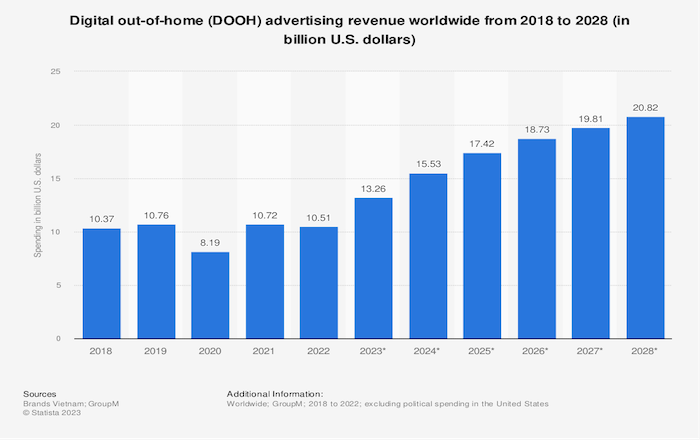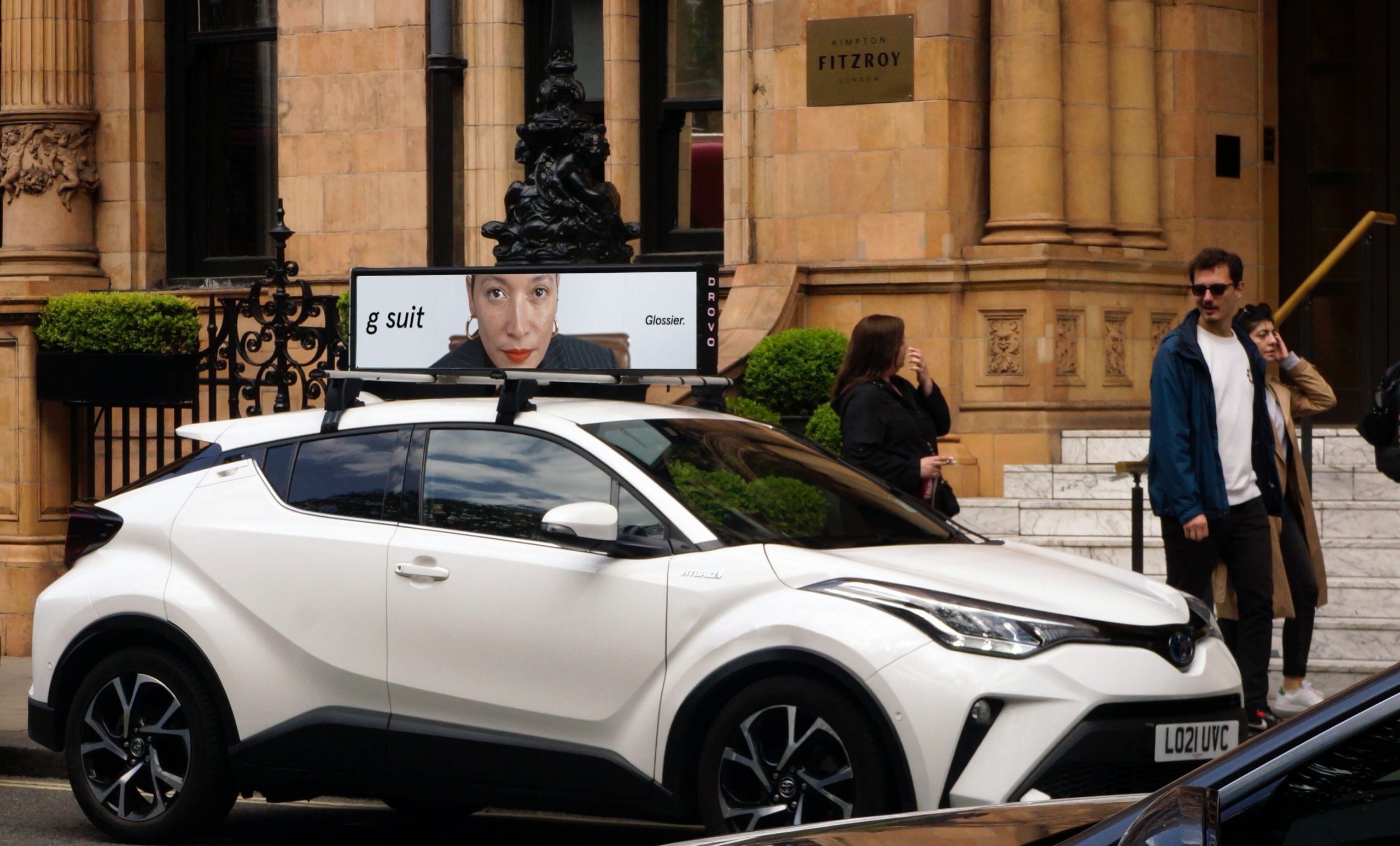How Do Digital Advertising Screens Make an Impact on OOH Audiences?

Illuminated Out-of-Home advertisements have been around for a good few years. Neon signage has been used for advertisements for over a century. However, in the past two decades, digital displays have become the new norm in the Out-of-Home advertising sector.
DOOH advertising is growing year after year. Worldwide Digital Out-of-Home revenue is projected to reach £16.42 billion in 2028 ($20.82 billion).

Digital advertising screens have improved with technological advances and taken on a new lease of life. In 2024, it is common to find digital advertising screens on public streets with in-built cameras or interactive touch screens.
But have you ever wondered how digital advertising screens work? As specialists in running on-vehicle digital advertising screen campaigns, here Drovo takes a look into how digital advertising screens make an impact on OOH audiences.
LED Digital Advertising Screens
LED sales have rocketed in recent years since businesses and households have cottoned on to how much more energy-efficient and money-saving they are. It is forecast that in 2025, LEDs will dominate 75.8% of the global lighting market.
White light LED digital advertising screens are made using phosphor conversion, whereas multicoloured screens use small red, green, or blue lights. These LED bulbs work together to produce detailed contours, rich colours, and high-resolution images which stand out, just what brands want from out-of-home advertising to catch the public’s eye.
What Are The Benefits of LED Digital Advertising Screens?
What is the deal with LEDs? Why have LED digital screens become so popular in the Out-of-Home sector? Well, here is a list of the pros of using LED-powered digital advertising screens for OOH campaigns
- High energy efficiency up to 75% less energy than incandescent lighting and last up to 25 times longer, according to the U.S. Department of Energy
- High-definition screens, like the ones we offer at Drovo, provide crystal-clear images for your Digital Out-of-Home campaigns
- The best lighting option for the environment
- Able to stay bright in dark conditions (high lumen output)
- Stay cool and avoid overheating
- A longer lifespan than other forms of lighting means your advertising screens will stay properly lit for longer without needing to be replaced.
At Drovo, all of our car screens are LED-powered and more than capable of captivating the attention and eyeballs of passersby.
Not only do we use LED digital screens for our campaigns because they look sensational and attract Out-of-Home audiences, but using them also aligns with our belief in sustainability as a transit media company with the UK’s largest committed carbon-neutral fleet. Emissions in every mile of our on-vehicle campaigns are 100% carbon offset.
The Hyper Targeting Capabilities of Digital Advertising Screens
Are you having a headache with hyper targeting your campaigns for smaller target audience groups effectively?
One of our Drovo specialists, Product Manager Jasper Wong, explains in more detail how our on-vehicle advertising screens empower you to hyper target your campaigns with aplomb.
 >
>
Contact Drovo today
Want your DOOH campaigns to stand out and make a real impact? Drovo’s on-vehicle screens are the perfect answer.
Speak to our teamOLED Digital Advertising Screens
OLED stands for ‘Organic Light Emitting Diodes’ and contains a thin film emitting light in response to an electric current. The difference between OLED and LED lights for digital advertising screens is that the pixels of OLED screens are self-illuminating.
What Are The Pros and Cons of OLEDs?
There are upsides and downsides to using OLEDs for digital advertising screens, let’s take a look at them.
Benefits of OLED Screens
- High-quality picture
- Require minimal power to start
- Light in weight
Cons of OLED Screens
- OLEDs are vulnerable to humidity and rainfall – and this can affect their lifespan
- Prone to reaching high temperatures and overheating
- More expensive
LCDs
Liquid Crystal Display (LCD) digital advertising screen displays have fluorescent backlights, whereas LED screens use Light Emitting Diodes as backlights.
Why Use LEDs Instead of LCDs for Digital Advertising Screens?
The quality of your on-vehicle screens moving with audiences is important. Drovo uses LEDs for our on-vehicle digital advertising screens because they offer better picture quality than LCDs. Our double-sided digital screens also adjust for OOH audiences according to ambient light levels and they are water resistant.
Are impactful targeted Digital Out-of-Home campaigns with on-vehicle digital advertising screens something you are after?

Want to run a DOOH campaign with Drovo?
Since you’ve reached the end of the blog, let’s have a chat about on-vehicle digital screen campaigns
Speak to the team today